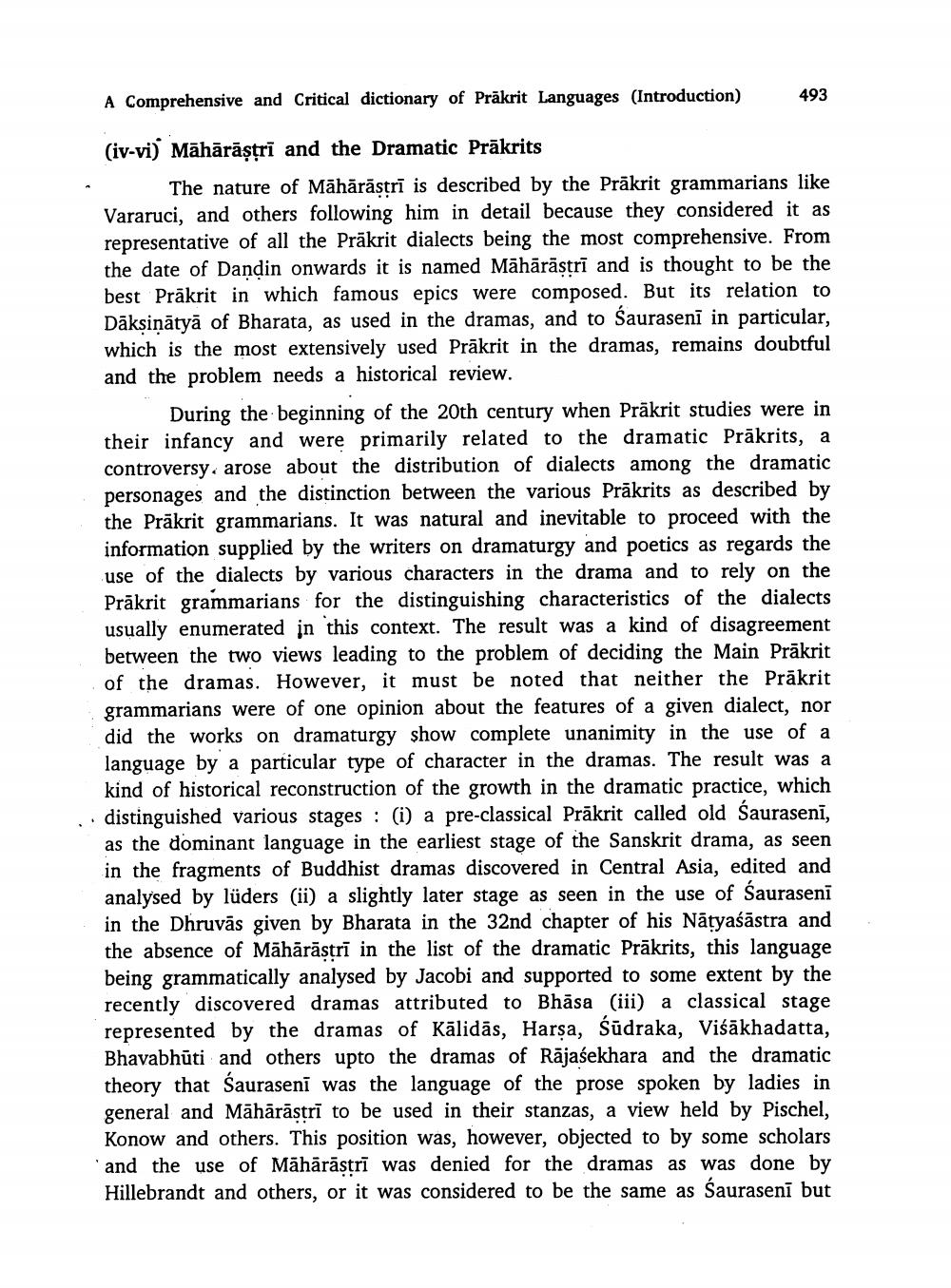________________
A Comprehensive and Critical dictionary of Prākrit Languages (Introduction)
493
(iv-vi) Māhārāștri and the Dramatic Prākrits
The nature of Māhārāstrī is described by the Prākrit grammarians like Vararuci, and others following him in detail because they considered it as representative of all the Prākrit dialects being the most comprehensive. From the date of Dandin onwards it is named Māhārāstrī and is thought to be the best Prākrit in which famous epics were composed. But its relation to Dāksinātyā of Bharata, as used in the dramas, and to Sauraseni in particular, which is the most extensively used Prakrit in the dramas, remains doubtful and the problem needs a historical review.
During the beginning of the 20th century when Präkrit studies were in their infancy and were primarily related to the dramatic Prākrits, a controversy, arose about the distribution of dialects among the dramatic personages and the distinction between the various Prākrits as described by the Prākrit grammarians. It was natural and inevitable to proceed with the information supplied by the writers on dramaturgy and poetics as regards the use of the dialects by various characters in the drama and to rely on the Prākrit grammarians for the distinguishing characteristics of the dialects usually enumerated in this context. The result was a kind of disagreement between the two views leading to the problem of deciding the Main Prākrit of the dramas. However, it must be noted that neither the Prākrit grammarians were of one opinion about the features of a given dialect, nor did the works on dramaturgy show complete unanimity in the use of a language by a particular type of character in the dramas. The result was a kind of historical reconstruction of the growth in the dramatic practice, which · distinguished various stages : (i) a pre-classical Prākrit called old Saurasenī, as the dominant language in the earliest stage of the Sanskrit drama, as seen in the fragments of Buddhist dramas discovered in Central Asia, edited and analysed by lüders (ii) a slightly later stage as seen in the use of Sauraseni in the Dhruvās given by Bharata in the 32nd chapter of his Nātyaśāstra and the absence of Māhārāstrī in the list of the dramatic Prākrits, this language being grammatically analysed by Jacobi and supported to some extent by the recently discovered dramas attributed to Bhāsa (iii) a classical stage represented by the dramas of Kālidās, Harsa, Śūdraka, Viśākhadatta, Bhavabhūti and others upto the dramas of Rājasekhara and the dramatic theory that Sauraseni was the language of the prose spoken by ladies in general and Māhārāstrī to be used in their stanzas, a view held by Pischel, Konow and others. This position was, however, objected to by some scholars and the use of Māhārāstrī was denied for the dramas as was done by Hillebrandt and others, or it was considered to be the same as Sauraseni but




